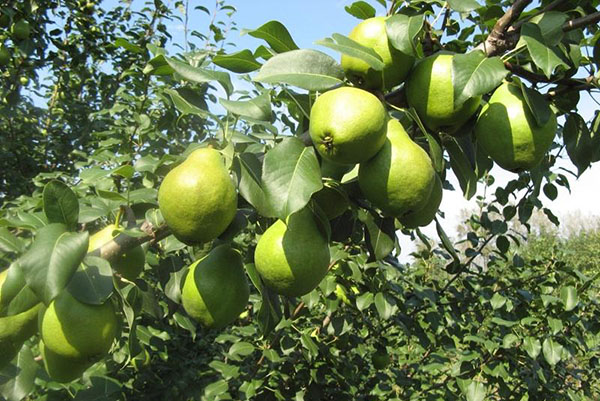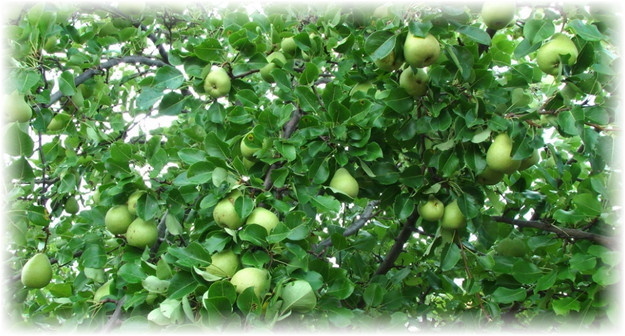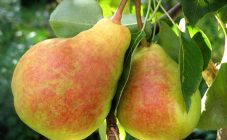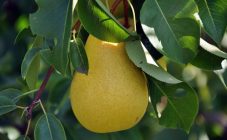Content:
Pear is one of the unique fruits with unusual healing and taste properties. Fruits contain fiber and have a healing effect on the body. Today there is a huge number of different varieties, among which special attention should be paid to the Moskvichka. After all, this variety favorably stands out for its unpretentiousness, endurance and has absorbed the best qualities of the fruit culture.
If you know the characteristics of the variety, provide the tree with all the necessary conditions, every year the gardener will receive an excellent harvest of delicious fruits.
A bit of history
Pear Moskvichka appeared thanks to the efforts of the staff of the Moscow Agricultural Academy. Timiryazeva, who, by selection, with free pollination of the American Kieffer, received new pear seedlings. S.P. Potapov and S.T. Chizhov. The cultivation of the variety began in the 80s of the twentieth century.
This variety is suitable for the Volgo-Vyatka, Middle Volga and Central regions of our country. The pear is also grown in the gardens near Moscow.
Description pear Moskvichka
The tree of this pear variety grows medium in size, the crown is dense, the leafiness is medium. In young plants, the funnel-shaped crown, when it begins to mature, the crown will acquire a canonical shape. The color of the trunk is brown, the skeletal branches are light gray.
The Moskvichka variety has excellent shoots, they have a curved shape, average length and diameter. Shoots are covered with small convex lenticels. The internodes have a standard length, the kidneys are conical and brown in color.
The leaves are oval in shape, the edges are serrated. No pubescence; there is a slight curvature in the central part. The flowers are cupped, the corolla is white. Several flowers form a racemose inflorescence.
One pear weighs 120 - 130 grams, the weight of some specimens can reach 200 grams. The fruits are wide pear-shaped. The skin color is green-yellow, often with large reddish spots.
The pulp is white in color, has a dense texture. Moskvichka has sweet and sour taste and fragrant aroma.
The main advantages include:
- annual harvest;
- early maturity;
- high yield;
- resistance to disease.
General characteristics of the variety
Owners of fruit trees note that Moskvichka has stable fruiting and high yields, even if unfavorable weather conditions are established. About 50 kg of fruit are removed from one tree. Fruiting begins 3 to 4 years after planting the seedlings. Ripening of fruits from mid-September. Fruit practically does not crumble when ripe.
Ripeness is indicated by yellowing of the pear skin. To preserve the fruits, you need to remove them before signs of ripening appear, while the skin is still light green.
Fruits ripen indoors for 7 days. During this time, they acquire juiciness and canonical taste. You can store it for 10 days.If you put pears in a basement, then there they will retain their qualities for up to a month; and at zero temperature, the storage time increases to 90 days.
The trees have excellent endurance, they are not afraid of temperature changes, the harvests appear stably, regardless of weather conditions.
Selection of pear seedlings
To create a pear garden, planting seedlings can be carried out in spring and autumn:
- in the first version, they are planted in April - May, it is best to do this in the second half of April;
- in the second case in October, the recommended dates are 10 - 20 October.
It is recommended to choose biennial or annual trees as seedlings, it is preferable to take a biennial plant, which has a formed root system.
When buying a Moskvichka, you should pay attention to the following factors:
- seedlings should reach a height of 0.7 to 0.8 m;
- roots up to 20 cm long;
- there should be no broken branches.
Before planting, it is recommended to place the seedling in water or mullein solution.
Soil preparation
The soil for a pear seedling is prepared as follows:
- lay the top earthen layer about 40 cm;
- dig a hole with a diameter of 1 meter and a depth of 1 meter;
- the pit is filled with soil, which is prepared in a special way: humus - 2.5 buckets; sand - 2.5 buckets; superphosphate - 1.5 cups; potassium sulfate - 2.5 tablespoons; any organic feeding - 2 kg.
- filling the pit with soil;
- dolomite flour in the form of a solution (300 grams per 1 bucket of water);
- 2 buckets of water are poured into the pit.
Subtleties of care
After planting seedlings, watering is carried out at the rate of 0.5 buckets of water in the morning and the same amount in the evening. It is enough to carry out this procedure once a week. When fruiting begins, in the summer the pear is watered twice a week. In winter, cover the bottom of the trees with snow.
Watering fruit trees should be carried out according to the following scheme:
- before the buds begin to bloom;
- after flowering after 14 days;
- 14 - 21 days before the fruits appear;
- after removing the fruit.
If you stop watering the crop in September, the pear shoots will grow without delay, and the trees themselves will better tolerate frosts.
Top dressing
The Muscovite will need fertilizers from next season, after planting. Every year, with the onset of spring, ammonium nitrate in the amount of 30 grams per 1 m² is introduced into the trunks. With the arrival of autumn, feeding is carried out according to the following scheme:
For 1 m², the following fertilizers are used at the choice of the gardener:
- superphosphate - 50 grams;
- compost - ½ bucket;
- humus - ½ bucket;
- potassium sulfate - 30 grams.
Pruning pear
While the growing season lasts, trees need to be pruned. This procedure is carried out with the onset of spring and until the buds begin to bloom. Pruning allows the crown to form correctly. In addition, with proper pruning, the remaining shoots are leveled out during the growing stage.
The pear is cut according to the following scheme:
- remove branches growing inside the tree;
- pruning weak shoots;
- removing broken branches;
- delete those branches that are in contact with each other (select any of them).
Moskvichka belongs to unpretentious varieties with stable fruiting. Growing such a tree will not be difficult for both an experienced gardener and a beginner. It is important not to forget to take care of the pears and find the right place for them in the garden before planting.
















